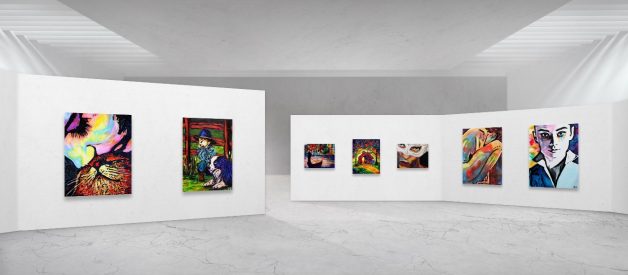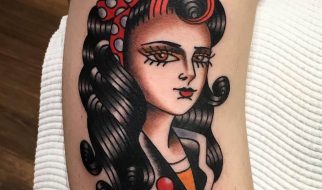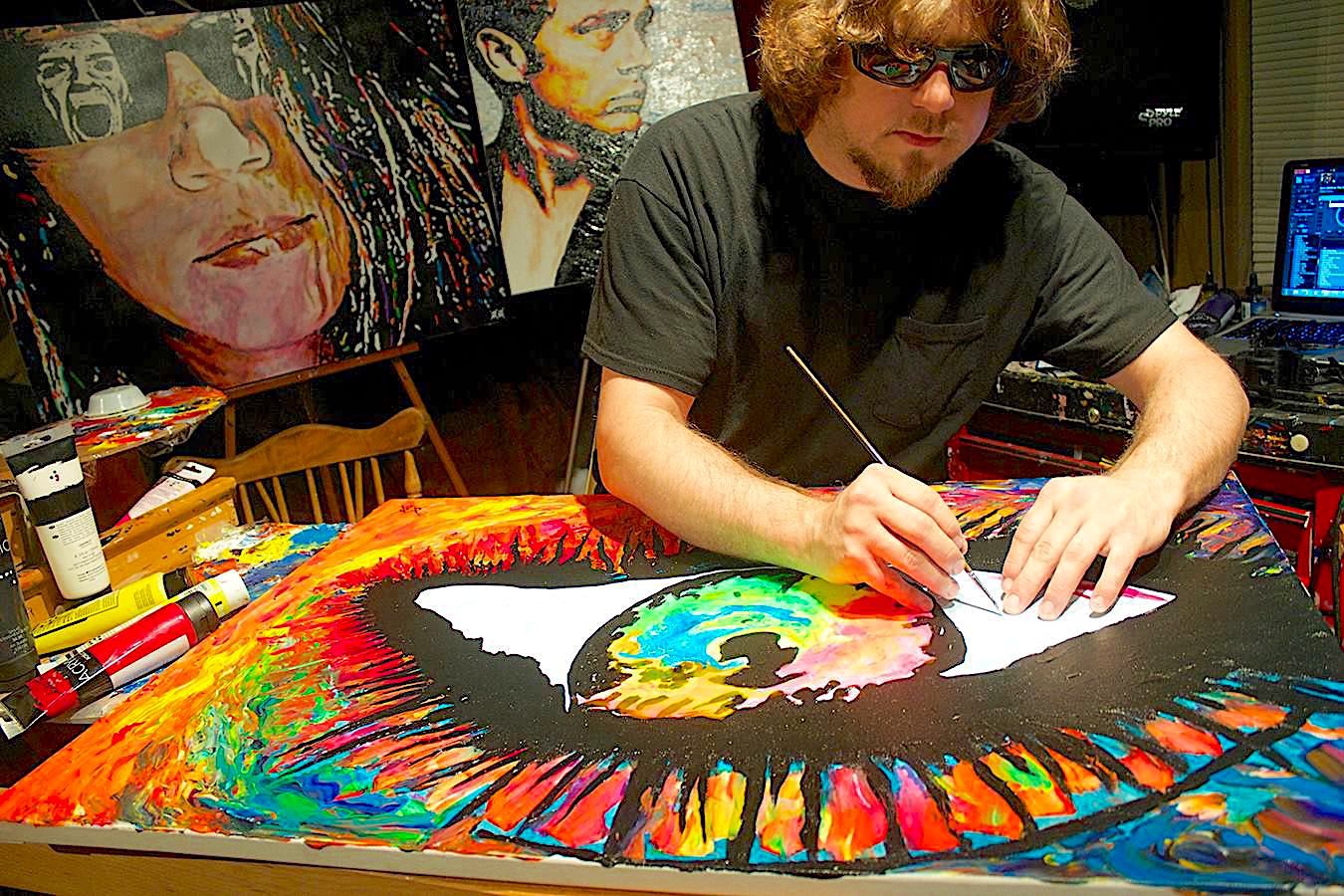
John Bramblit is a visually impaired visual artist based in Denton, Texas. To put it bluntly, he?s blind, but he?s also a painter.
Bramblitt paints by raising lines on the surface of a canvas and altering the consistency of paint so he can ?feel? the colors. He?s worked with internationally acclaimed museums like the Guggenheim and the Metropolitan Museum of Art to run popular workshops that teach people to see the world as he does and paint using their senses and imagination.
?I?ve drawn since I was really little, but I never painted until I lost my sight because I didn?t think I?d be good. But here I was, without my sight, and my brain was filling up with images, and I couldn?t get them out. And I didn?t think I?d be able to do art again.?
Take a look at John Bramblitt?s D Emptyspace galleries below:
Brazil Gallery in D Emptyspace / Originals for Sale Gallery in D Emptyspace
?Art came to me at a time when it just shouldn?t have. I mean, come on. It shouldn?t have. But it did.?
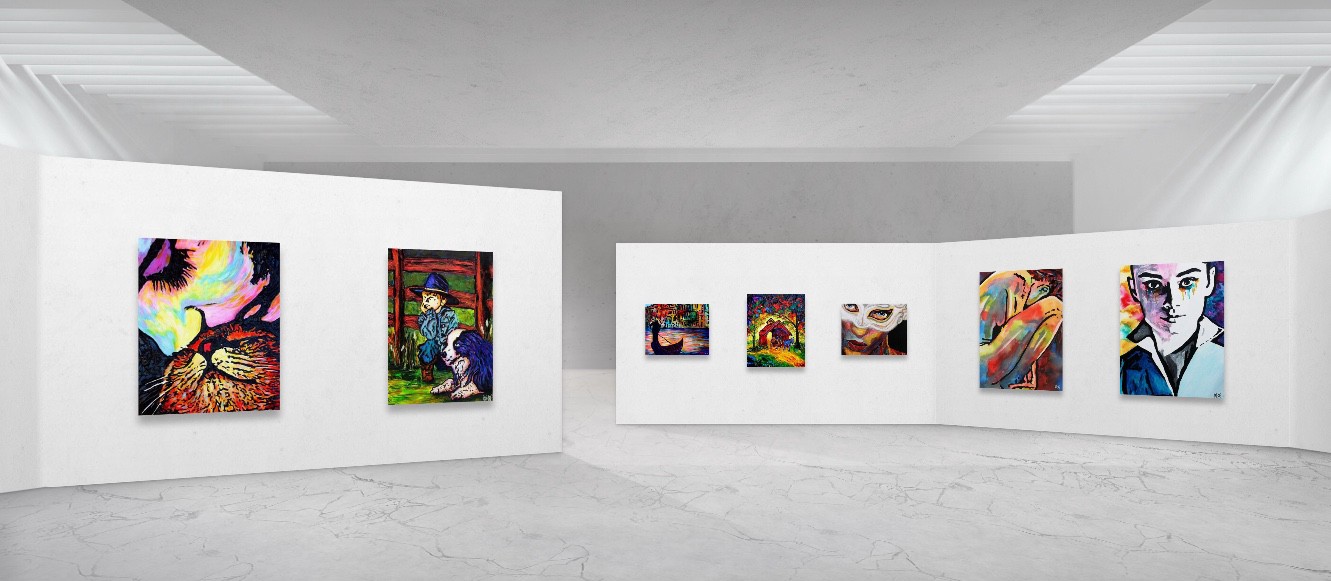 Brazil Gallery in D Emptyspace
Brazil Gallery in D Emptyspace
Let?s just jump straight into human curiosity. Can you remember what your paintings look like after you?ve painted them?
It?s a funny thing. When I was sighted, I thought your physical eyes is where vision comes from ? even though I knew logically that it?s your brain that makes the images.
But when I lost my sight? my brain still made the images. It?s almost like when you?re dreaming, you see the world, and it seems very real to you. It?s because those images are coming from the same part of your brain as when you?re seeing with your eyes.
But the trick is trying to get those images out of my brain. And that was the hard bit in the beginning.
?Imagination is more important than knowledge. For knowledge is limited, whereas imagination embraces the entire world, stimulating progress, giving birth to evolution.? is one of my all-time favorite quotes from Einstein.
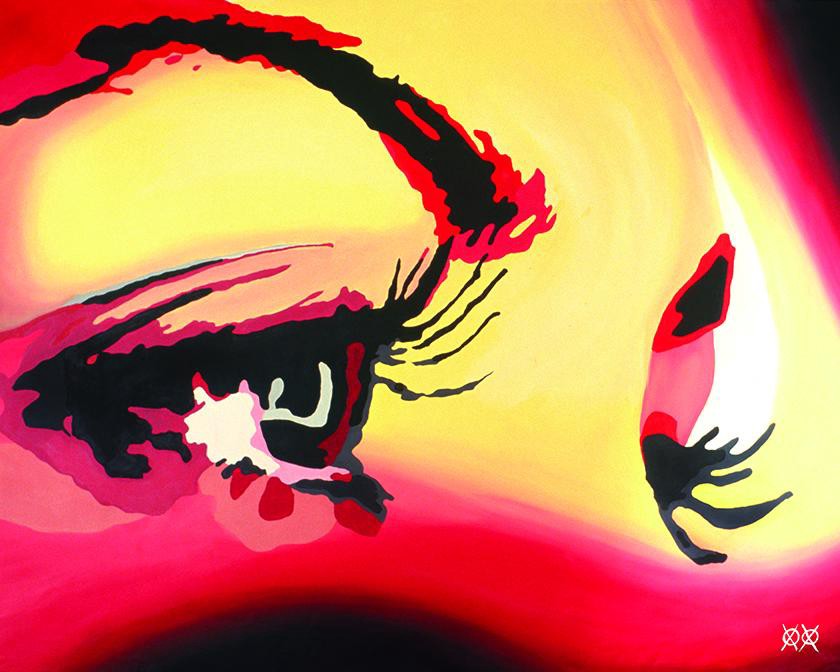 Perceptions11
Perceptions11
You?re a pretty progressive guy. How does technology affect the way you do art?
Thank goodness for the internet! It allows like-minded people all around the world get together. A lot of what I do is international. And I?m always looking for a different way to reach out and to put artwork out there. And it gives me a way to meet other people. That?s actually how we (my wife and I) came across D Emptyspace, we were just browsing through new things.
One of the most powerful things about art is that it cuts through time, it cuts through borders, it cuts through language ? everything.
Technology helps me a lot. In my studio, I have a massive 3D printer. I can print out statues, I can print all kinds of things. For example, I?m doing a commission that has the Statue of Liberty in it. I remember seeing that when I was a kid, but I can?t remember the exact details. But with my 3D printer, I can print it out and feel it. So with technology, I?m not limited anymore by what?s in front of me.
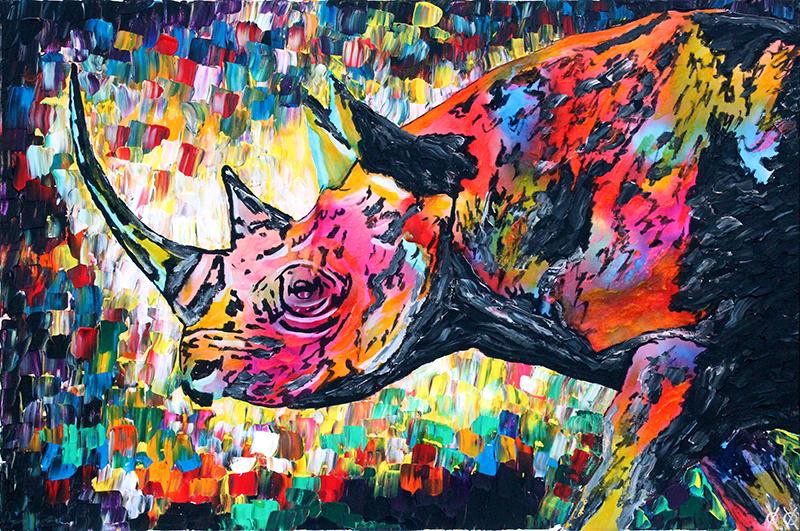 Symphony in Black
Symphony in Black
I?ve heard you run some pretty interesting workshops all over the place. Can you tell us about your experience with them?
Every workshop that I teach is free (unless we?re raising money for charity or nonprofit). And it?s because I want to include everyone. Even if you?re blind, even if you?re in a wheelchair, even if you speak a different language.
Everybody?s included. Everybody paints at the same time. Everybody goes on the museum tour. And it sounds like everything would be crazy. A helter-skelter mess of people of all ages and abilities? But it?s not, it?s actually brilliant! Everybody?s just laughing, we?re all having a great time. It?s hands-on art.
99% of the people I work with don?t have a disability, but it?s that 1% that I get to work with have Alzheimer?s, or PTSD, or are in wheelchairs, or blind? that 1% just makes me feel so great.
In any given workshop, you could have something like a professional artist sitting next to a child that?s never painted before or is visually impaired. And the child is asking questions that the professional artist has never thought to ask. And then the professional artist is coming up with ideas and helping that child formulate their own art. And it makes them both rethink.
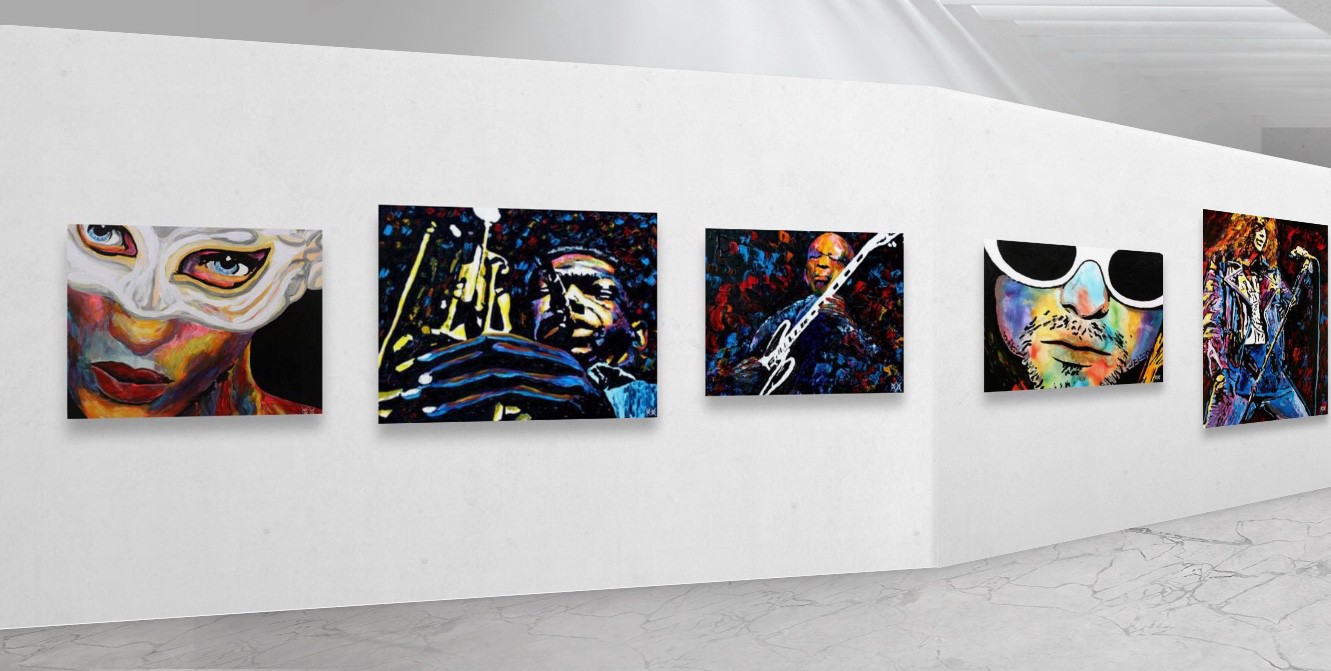 Originals for Sale Gallery in D Emptyspace
Originals for Sale Gallery in D Emptyspace
My rule is if I?m doing a show somewhere, I?ve got to do workshops ? we?ve got to go into a children?s hospital or a museum or a gallery, we?ve got to go somewhere, and it?s got to be free.
If I do an exhibition at a gallery, I want to do something in the community ? it?s one of my rules. And a lot of galleries are hesitant and say, ?Oh, I don?t know, we?re not charging anything?? But whatever we do turns out amazing for the gallery because we get publicity for doing crazy things. I mean, we?re blindfolding people to show them how to paint!
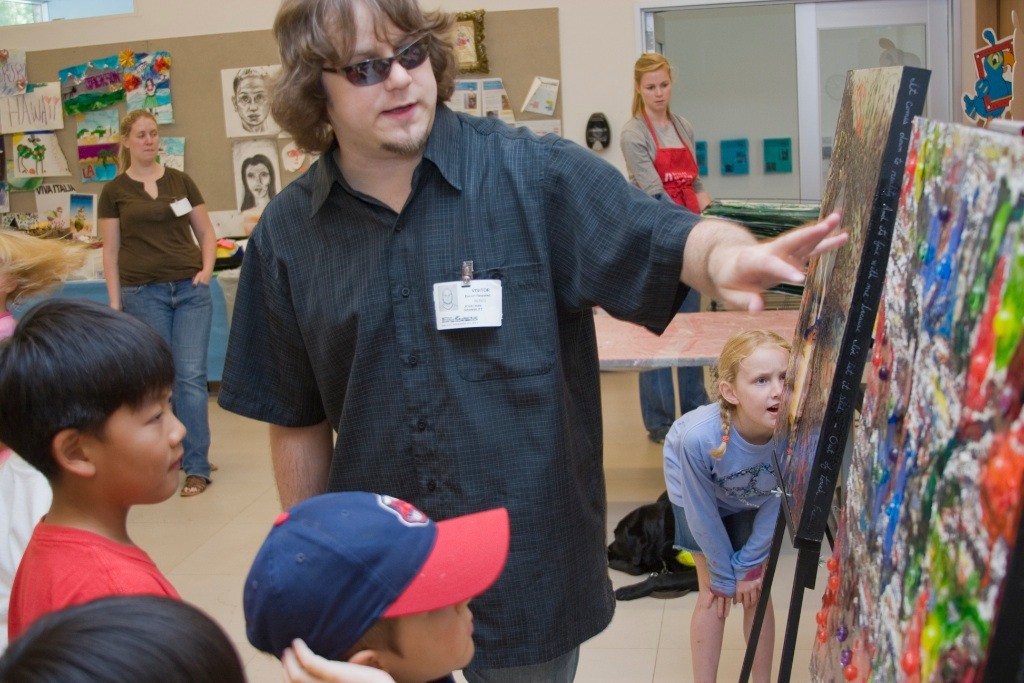 Bramblitt pictured at one of his workshops
Bramblitt pictured at one of his workshops
Do you ever feel overwhelmed by your blindness or overcome by negative emotions? How did painting help you when you first became blind?
I do. And I used to be really nervous about talking about it. But something helped me change that. The first time I gave a talk at the Metropolitan Art Museum in New York, I wanted to mention a few famous artists that had a disability. So I tried to find artists represented in the museum that were depressed, autistic, epileptic or had a disability in some way. Then I realized that I had a hard time finding somebody in the museum that didn?t have a problem!
Lots of artists have been ? and still are ? separated from their society, by their beliefs, the way they live their lives or some other factor. It makes sense that most people who make art have gone through something. All art is, is communication. And people want to communicate when they?re in pain or they want to reach out.
Art?s a very healthy way to deal with depression, anger, and those problems. To reach out and try to communicate those feelings.
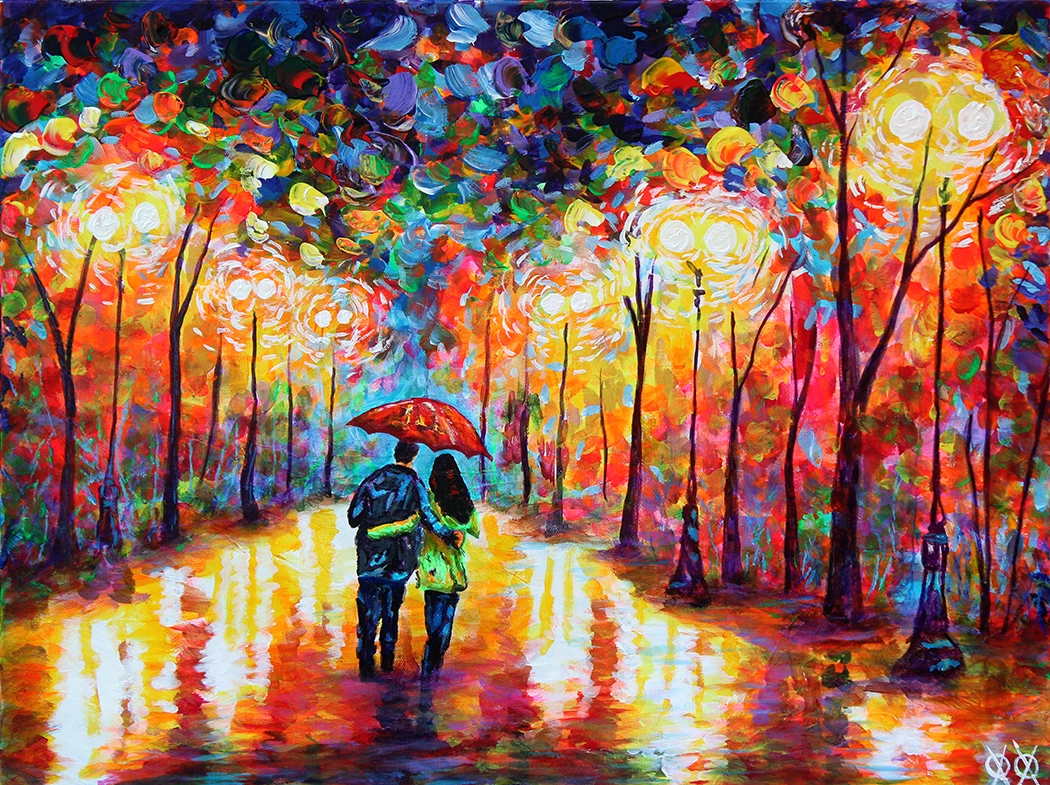 Park Melody
Park Melody
When I lost my eyesight, I was so depressed, I didn?t even realize that I was angry.
I was really nice to everybody. And I was doing everything that I was supposed to. I was still going to college as an English major? but I couldn?t read or write. I sat in class thinking stuff like, ?well that sounds like a great book, wish I could read it?.
It?s really easy to focus on the things that are bad in your life, things that have been taken away. And I know whenever I first lost my sight, I was very depressed about that. But one of the things that I was given is painting. Because I did illustration all my life, (I didn?t paint, I didn?t think it?d be a good painter), my brain and my hands understood how to draw. And so I was able to make art.
Nowadays, I paint about 12 to 14 hours a day, 7 days a week. Except for the days when I travel. On those days it?s between 4 and 6 hours. I?m a little obsessed with it, but it?s my way of understanding the world. I need it. Recently I had back surgery and couldn?t paint for 2 weeks. And I was getting all jittery!
Painting makes me really happy. It?s my way of reaching out to the world.
You?re not sighted, but you can still paint amazing likenesses of real people ? how do you do that? And what do you mean when you say that a work needs to ?feel? like that person?
If you?re painting a tree, a leaf can be off who?s going to know? But if a nose is crooked, everybody?s going to notice and it won?t be a very good likeness of the person. So I need to get that right, but it?s also about color. The colors have to match a person?s feel.
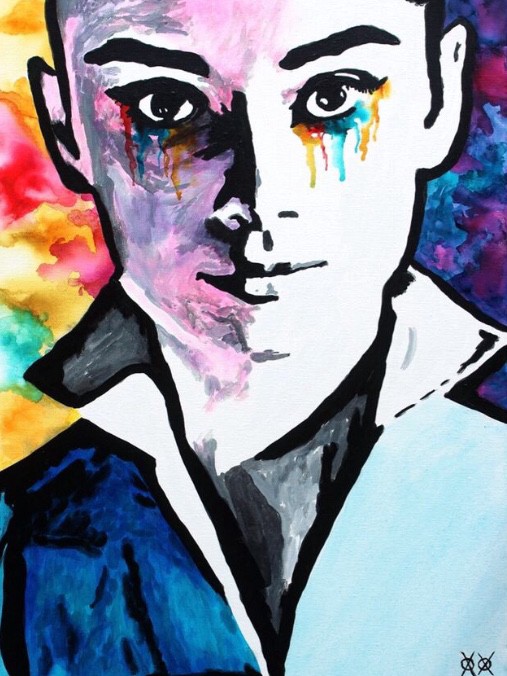
A while ago I did a painting for the Epilepsy Foundation. The model was an 11-year-old girl who has epilepsy and the painting was for an award she was winning. I read her biography, and all about her, and I thought ?Oh, she?s amazing. She?s vibrant and busy, and energetic?. I had the entire color palette ready in my mind for the canvas. All I needed to do was feel her face real quick. I thought that was the last component.
But when I met her, the colors were completely wrong! She?s an amazing kid and she was vibrant and all, but she was also very stoic. She had this internal energy that was really funny and witty. And I realized that if I used the color palette I was thinking of, the painting wouldn?t really look like her. Because it wouldn?t feel like her.
Now I know that I actually need to get to know a person to paint them. It?s more than just touching their face.
You use raised lines to find your way around a canvas. How did you develop that technique?
The way I paint is just using basic cane skills. It?s the same skills you use with a guide dog. It doesn?t require expensive equipment or anything. Because if you can feel your way around a busy city with a cane and not get hit by a car (and you can), then you should be able to feel your way around a canvas with your fingers. It?s just smaller movements.
Thanks to my background in illustration, I was able to use compositional techniques that painters have used for centuries to break down a person?s face into smaller little areas to understand what they looked like. So when I started learning how to draw and paint again, I learned how to translate touch into images.
Any person that learns how to get around using a cane can learn to paint and vise versa.
I know it sounds crazy and ridiculous, but all you?re learning to do on a canvas is spatially orient yourself. You?re putting something in one place, and remember where something else is. For example, when you navigate around a room, you know where the door is, where you put your coffee cup, that kind of thing. It?s just basic orientating.
And it?s incredible. As visually impaired children learn to paint in the way I paint, their ability to get around just explodes. It?s just ridiculous. Suddenly they go from bumping into things to zooming around a room with their friends in just two weeks.
How do you tell colors apart when putting them on the canvas?
I map out every stroke of a painting in my mind before I even start. Of course, it changes while I?m painting. But I know every step I need to take in advance.
To tell colors apart, I change the way they feel. So that I can touch a paint, and know what color it is by how it feels. I do this by using different mediums that I mix in. So whether you?re sighted or blind, white feels like toothpaste and black feels like runny oil.
And of course, the big question? How can someone blind ?see? color?
For my whole life, whenever I hear music or sound, I see color. And when my eyesight went, that?s where a lot of my color came from. Music and sound, and a little bit of emotion.
I?m a huge color nerd. I?ve read every book on color theory that I can get my hands on. But it was 11 years ago, when my son was born, that I really started to understand color.
I didn?t know what color was until my son was born. When I felt his face and saw what he looked like, color changed for me. It just wrinkled my brain.
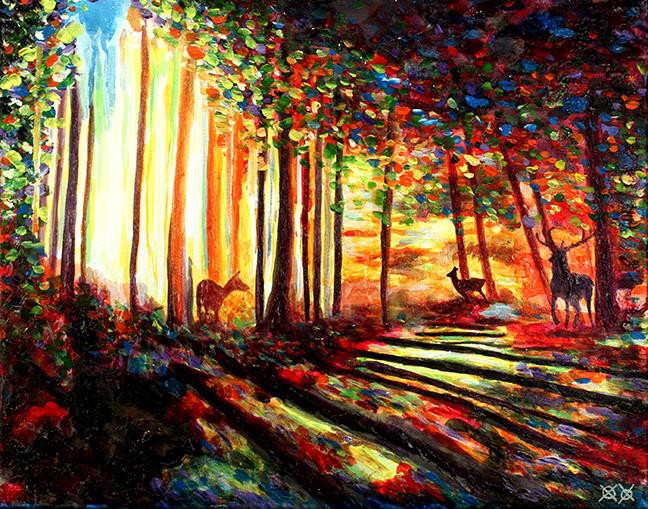 Morning Forest
Morning Forest
Within moments of my son being born, I was able to feel his face when he took his first breath. I don?t think a visually impaired person has ever been able to see their child like that. It was such a special moment for me. When I felt his face, color just exploded.
I had this new understanding, an emotional level that I?d never experienced before.
The longer that I paint, the happier I am, and the brighter the colors become. When I first started, everything was very dark and very morose.
 Escape by John Bramblitt
Escape by John Bramblitt
How do you navigate marketing your art and how did you get your name out there in the beginning?
I had a lot of seizures back when I started, and it was affecting my breathing and my heart. I honestly didn?t think I?d have that much time, so I did what made me feel good and what I thought was important. And then my health got better and it started to pay the bills! It all just kept going, and I kept doing it.
But I understand how hard it is to put your name out there when it comes to art. I know gallery owners love art. But a lot of young artists make the mistake of thinking ?Oh, they love artwork, so they?re just going to have me come in, maybe I?ll sell some pieces for the gallery, and it?s gonna be great.?
Nope, that?s not how it works ? they need somebody that has a track record. Because if they don?t sell anything, they don?t make any money that month. And even though they love art, they have to pay the bills. So because of that, It makes sense that it?s hard to break into the gallery world.
I didn?t want to show my art in the beginning. It wasn?t even a thought. So I started working with nonprofits and charities, running workshops, doing shows and fundraisers and things like that.
Then I started to realize something, and I?ve been telling other artists this:
The people that fund charities, the people that help nonprofits, the people that have free time to go to these things, are also the people that support the arts because they have the time and money to be able to do it.
I didn?t think about that start. People would say ?thank you so much for coming out for our cause? and then in the same breath they?re saying ?hey, by the way, I like your art and I want to commission a piece?. I think that?s a great way to get started.
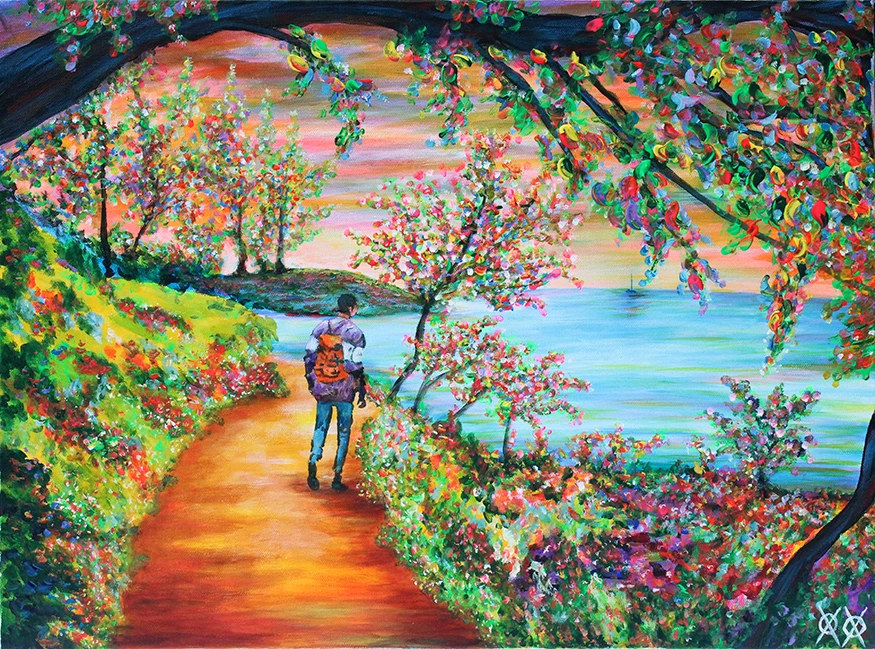 Wandering but never lost by John Bramblitt
Wandering but never lost by John Bramblitt
I read that when you first exhibited, you didn?t tell people that you were blind. Why was that and do you ever still do it?
My blindness is still a very personal, private thing that I keep close to me.
Back then I thought being blind made me different than everyone else. But I started to realize it actually made me more alike.
We all have something in our lives at some point that just seems bigger than us, that seems insurmountable, that we don?t know how we?re going to do it. But we just have to have faith in ourselves and push ourselves through it.
When I realized that, I stopped hiding the fact that I was blind, and it made me a lot happier. I was able to work with charities and nonprofits, and that made me feel even better. Because it doesn?t matter where I travel in the world, when I do workshops, I get to be around the best people. I get to hang out with people that are doing art for all the right reasons, and it recharges my batteries.
What?s next for you?
The US state department has been sending me all over, to Brazil in September and Poland in October to name a few places. I?m going to be going to schools, museums, universities and children?s hospitals to run my free workshops and exhibitions ? something I?m really looking forward to.
One of the biggest reasons why I love working with museums is that I get to make them more inclusive.
This year marks 10 years of partnership between me and the Dallas Museum of Art. And I?d like to continue doing that. Looking forward, I plan to work with more children who have disabilities, because that?s something I really love doing. Plus thicker paint. I think I?ll be experimenting with lots of thick paint in the near future. I?m talking inches and inches ? it?s going to be crazy!
Learn more about John Bramblitt via his Website.
All artworks are for sale either as originals or limited edition prints. Click here to view the full range of originals and over here for the range of prints.
Get in contact with John for workshops, speaking engagements and commissions by emailing him here: [email protected]
Instagram | Facebook | Twitter
Download D Emptyspace for iOS: https://apple.co/2MhsxCs
Android version coming soon!
Follow D Emptyspace for more company updates and art-curated content!
Website | Twitter | Facebook | Instagram | Download
